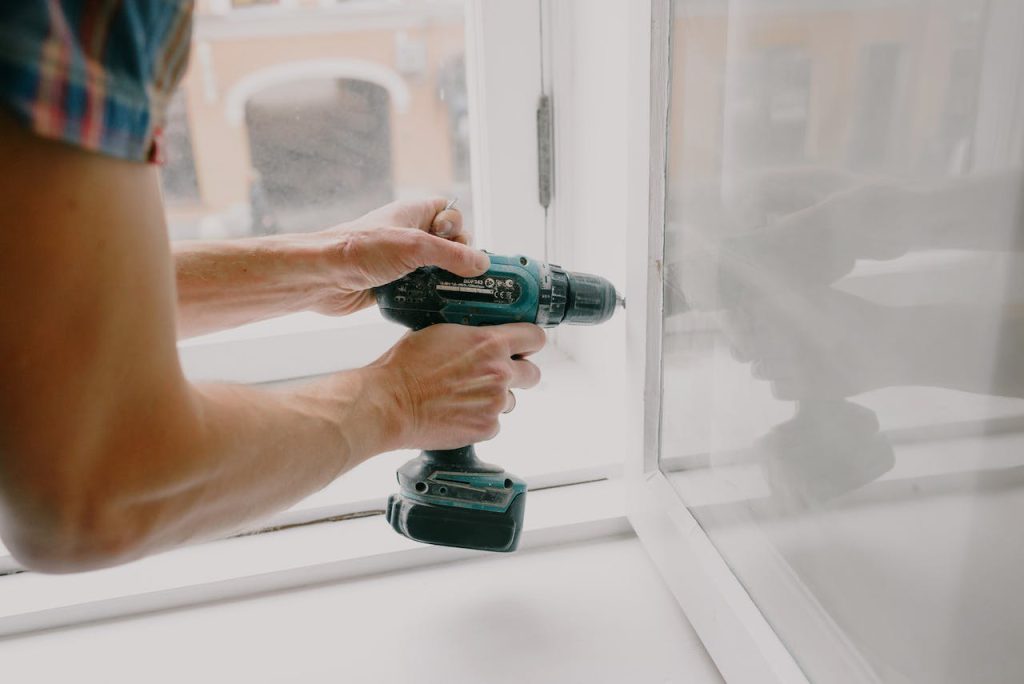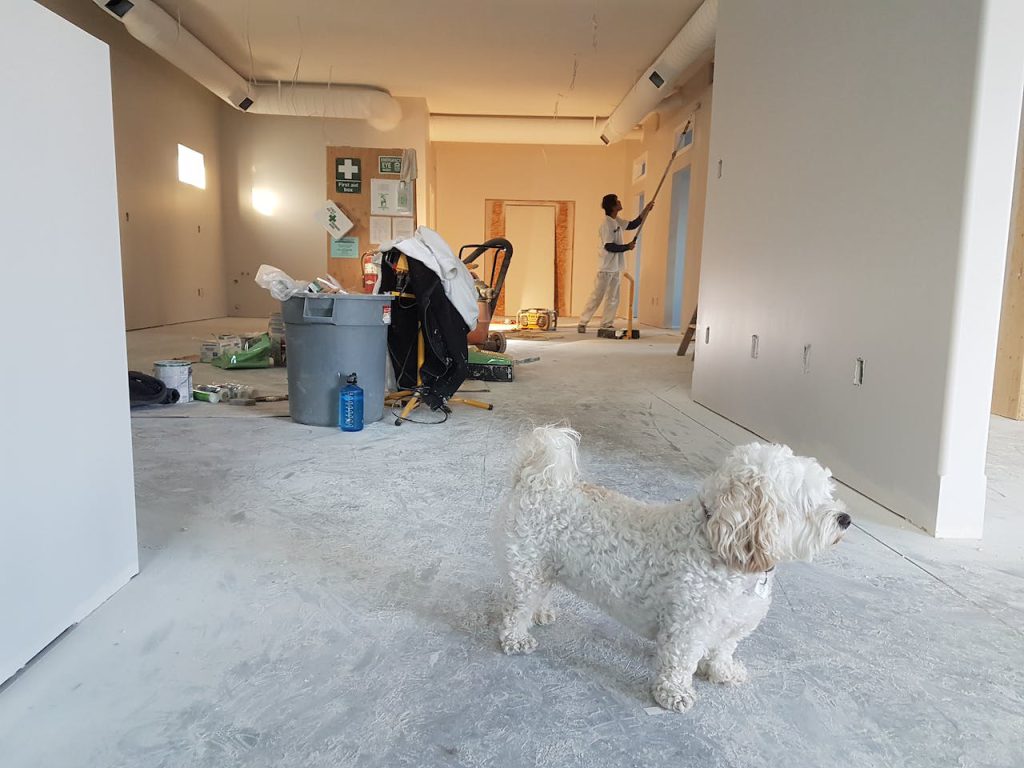Mold damage isn’t just a cosmetic issue; it can wreak havoc on your health and home’s structure. Acting swiftly is paramount to halt its spread and avoid hefty repairs. This article sheds light on recognizing crucial signs that scream “mold emergency.”
If you notice musty odors, visible mold growth, or recent water damage, these could be red flags demanding immediate attention. Keep an eye out for allergy flare-ups or unexplained health issues as they might signal hidden mold problems. Ignoring these warning signs may lead to extensive damage and jeopardize your well-being. Here are seven signs that might indicate an urgent need for mold damage repair:
- Visible Mold Growth: Obvious patches of mold on walls, ceilings, or other surfaces indicate an active mold infestation that needs immediate attention.
- Musty Odor: A strong, persistent musty smell, particularly in closed or damp areas, often signifies hidden mold growth behind walls, under carpets, or in other concealed spaces.
- Water Damage: Any recent water intrusion, such as leaks from pipes, roofs, or flooding, can lead to mold growth. If you’ve experienced water damage, mold may develop within 24-48 hours, necessitating swift action.
- Health Symptoms: Symptoms like persistent coughing, sneezing, skin irritation, or worsening allergies among occupants might be due to mold exposure. Mold can trigger various health issues, especially in sensitive individuals.
- Discoloration Or Stains: Discoloration on walls, ceilings, or surfaces, such as black, green, or brown spots, often indicates mold growth or water damage, warranting investigation and repair.
- Peeling Or Warping: Paint or wallpaper peeling off walls or warping of surfaces like wood or drywall can indicate moisture issues that may lead to mold growth beneath the surface.
- High Humidity Levels: Excessive indoor humidity (above 60%) can foster mold growth. Monitoring humidity levels with a hygrometer can help identify potential mold-prone areas.
Table of Contents
ToggleRecognizing Mold Damage In Your Home
Visible Signs
There are several visible signs you should be aware of. Black or green patches on walls, ceilings, or other surfaces are a clear indication of a mold problem. Peeling wallpaper, bubbling paint, and warped walls can signal underlying mold growth. These visible indicators often go unnoticed but are crucial in identifying the urgency for mold damage repair.
Mold spores thrive in damp environments and can quickly spread throughout your home if left unchecked. It’s essential to regularly inspect areas prone to moisture accumulation such as bathrooms, kitchens, basements, and attics for any signs of discoloration or staining.
Effects On Surfaces
The effects of mold damage aren’t limited to just visual cues; they can also manifest physically on various surfaces within your home. For instance, affected drywall may appear discolored or have a musty odor emanating from it. Warped wooden structures like window frames or doorways could indicate the presence of mold behind these fixtures.
In addition to this physical evidence of mold growth on surfaces and structures within your home, it’s important to pay attention to any changes in air quality that might affect you and your family’s health.
Impact On Health
Aside from the structural implications caused by a mold problem, it is crucial not to overlook its potential impact on health. Exposure to mold spores can lead to respiratory issues such as coughing and wheezing while aggravating existing conditions like asthma or allergies.
Moreover, prolonged exposure may cause more severe health problems including chronic lung illnesses. Therefore, inspections for visible signs should not be taken lightly as they could potentially safeguard the well-being of everyone residing in the house.
Identifying Mold Growth And Its Implications
High Humidity Levels
Mold growth is often indicated by the presence of high humidity levels, commonly found in areas like bathrooms, basements, and kitchens. When these spaces have excess moisture, it creates a perfect environment for mold to thrive. For instance, after taking a hot shower without proper ventilation in the bathroom, the lingering moisture can lead to mold growth on walls or ceilings.
Excess moisture can also accumulate in basements due to poor ventilation or water seepage through cracks. Similarly, kitchens with inadequate ventilation or leaks around sinks and faucets can foster mold growth. These are all prime locations where mold might urgently require repair.
Structural Damage
The implications of untreated mold growth extend beyond aesthetic concerns; they pose serious risks to your home’s structural integrity. Over time, mold can weaken wood and other building materials as it feeds on organic matter within them. This weakening effect compromises the strength of structures such as wooden beams and floorboards.
For example, if left unchecked for an extended period, mold infestations on wooden support beams in a basement could compromise their load-bearing capacity. This could eventually result in sagging floors or even structural collapses.
Health Problems
In addition to causing structural damage to your home, mold growth poses health risks due to exposure to its spores. The inhalation of these spores can trigger allergic reactions such as sneezing, coughing, and skin irritation in sensitive individuals.
Moreover, exposure to mold spores may exacerbate respiratory conditions like asthma or bronchitis. Individuals with compromised immune systems are particularly vulnerable and may experience more severe health issues when exposed to molds at home.
Understanding Musty Odors As Mold Indicators
Detecting Musty Odors
A musty odor lingering in your home can be a powerful indication of underlying mold growth, even if you cannot visually spot any signs. These odors are often more noticeable in enclosed spaces with limited air circulation, such as closets or cabinets. If you come across a persistent musty smell that doesn’t dissipate despite cleaning or airing out the area, it’s highly likely to be due to hidden mold.
When fungus spores are present and actively growing within an indoor environment, they release volatile organic compounds (VOCs) that produce the characteristic musty odor associated with mold. Although these spores might not always be visible to the naked eye, their presence can still lead to the distinct smell of mold. It’s essential to understand that if you notice this type of odor persisting in specific areas of your home, it could signify an urgent need for mold damage repair.
Impact On Indoor Air Quality
The presence of musty odors caused by mold growth signifies a potential decline in indoor air quality. When left unaddressed, these conditions can pose health risks and exacerbate respiratory issues for individuals living within the affected space. The release of VOCs from spores contributes significantly to poor air quality and should serve as a clear indicator for seeking prompt professional assistance for remediation.
Persistent exposure to airborne contaminants stemming from active mold growth may lead to various health concerns such as allergies, asthma attacks, respiratory infections, and other related issues. Therefore, recognizing and addressing the source of these musty odors is crucial not only for maintaining structural integrity but also for preserving occupants’ well-being.
Detecting Water Damage Linked To Mold
Water Stains
Water stains on walls or ceilings are common signs of potential water damage, indicating a need for urgent mold damage repair. These stains may appear as discolored patches, often brownish or yellowish, and can be indicative of excess moisture seeping into the walls or ceiling. If left unaddressed, these areas can become breeding grounds for mold.
These stains may not only compromise the structural integrity of your home but also pose health risks due to potential mold growth. It’s crucial to promptly address any water stains by identifying and fixing the source of the moisture to prevent further damage and inhibit mold proliferation.
Peeling Paint
Peeling or bubbling paint near plumbing fixtures is another clear indication of a possible water leak that could lead to mold issues. When there is excessive moisture accumulation behind the walls due to leaks, it causes the paint to lose adhesion and start peeling off. This compromised surface becomes vulnerable to mold infestation.
If you notice such signs in your home, it’s essential to investigate the area thoroughly for any underlying leaks and address them promptly. Ignoring these warning signs can exacerbate both water damage and subsequent mold growth, leading to more extensive repairs in the future.
Damp Areas
Damp or wet areas around sinks, under cabinets, or near windows are particularly susceptible spots for moisture accumulation that can foster mold growth. These areas provide an ideal environment for molds due to their constant exposure to moisture-laden air or direct contact with water sources like sinks.
Regularly inspecting these damp spots is crucial in catching early signs of potential water damage before they escalate into severe issues involving pervasive molds. Taking preventive measures such as ensuring proper ventilation in these areas can help mitigate excess moisture levels and reduce the risk of developing harmful molds.

Health Implications Of Mold Exposure
Allergic Reactions
Exposure to mold can lead to health problems such as allergic reactions. These reactions may manifest as symptoms like sneezing, coughing, and itchy eyes. When you notice these signs in your home, it’s a clear indication that urgent mold damage repair is necessary. For instance, if family members start experiencing unexplained allergy-like symptoms when indoors, there could be a potential mold issue affecting the indoor air quality.
Mold exposure doesn’t just affect people with existing allergies; it can also trigger new allergic responses in individuals previously unaffected by such issues. This highlights the urgency of addressing any potential mold problem promptly before it leads to more severe health complications.
Respiratory Problems
Prolonged exposure to mold spores can have serious implications for respiratory health. It has been established that breathing in mold spores can contribute to various respiratory problems, including asthma and bronchitis. If someone in your household begins experiencing persistent coughing or shortness of breath without any apparent cause, this might indicate the presence of harmful molds in the environment.
Individuals with weakened immune systems or pre-existing respiratory conditions are particularly vulnerable to the detrimental effects of mold exposure on their health. For example, individuals undergoing chemotherapy or those living with HIV/AIDS are at an increased risk when exposed to molds due to their compromised immune systems.
Importance Of Professional Mold Removal Services
Importance Of Professional Mold Removal Services
Seeking professional help is crucial. These experts have the knowledge and tools to safely eliminate mold from your home. DIY attempts often fail, leading to further mold spread.
Professionals not only remove visible mold but also address the root cause of the issue. Their remediation services ensure that proper techniques are used, preventing future problems.
Expertise In Effective Removal Process
Professional removal process involves thorough inspection and assessment of the affected areas. They identify hidden mold growth and moisture sources, which are vital for complete eradication.
By utilizing their expertise, professionals can effectively contain and remove mold without causing cross-contamination or spreading spores to unaffected areas.
Comprehensive Restoration Techniques
Professionals utilize advanced restoration techniques that go beyond surface cleaning. They employ specialized equipment such as HEPA vacuums, air scrubbers, and antimicrobial solutions for a comprehensive cleanup.
Their methods include removing damaged materials like drywall or insulation and restoring structural integrity through professional repairs.
Prevention Of Health Risks
The presence of mold poses significant health risks as discussed in the previous section. Seeking professional help ensures that you mitigate these risks effectively by eliminating all traces of mold from your living space.
Moreover, professionals take necessary precautions during removal to minimize exposure to harmful airborne particles.
Common Causes Leading To Mold Damage
High Humidity Levels
High humidity levels in your home can create the perfect breeding ground for mold. When indoor humidity exceeds 60%, it encourages the growth of mold colonies and mold spores. Areas with high humidity, such as poorly ventilated bathrooms, basements, or kitchens, are particularly susceptible to mold infestations. If you notice condensation on windows or dampness in certain areas of your home, it could be a sign that there’s excess moisture present, which may lead to mold problems.
Excess moisture from high humidity can seep into walls and ceilings, creating an environment where mold thrives. The presence of visible mold is often a clear indicator that urgent action is needed to address potential damage.
Plumbing Leaks And Roof Issues
Leaks in plumbing systems or roofs can introduce unwanted moisture into your home. This added moisture creates conditions ideal for mold growth, especially if left unaddressed for an extended period. For example, a small leak under a sink may seem inconsequential at first but could lead to significant water damage over time if not promptly repaired.
Even minor roof leaks can cause extensive damage by allowing water to penetrate the structure of your home. If you suspect any plumbing issues or notice signs of water intrusion from the roof, such as discolored patches on ceilings or walls, it’s crucial to address these problems promptly before they escalate into major mold damage concerns.
Inadequate Ventilation
Poor ventilation in specific areas of your home like bathrooms and basements contributes significantly to excess moisture buildup. Without proper airflow and ventilation systems in place, these spaces become more prone to retaining moisture—a key factor in fostering favorable conditions for mold proliferation.
Inadequate ventilation combined with humid conditions provides an optimal environment for molds’ rapid spread throughout affected areas within homes—prompting urgency when dealing with potential issues related to fungus development.
Critical Steps In Effective Mold Damage Repair
Identifying The Source Of Moisture
To effectively address mold damage repair, it is crucial to first identify and rectify the source of moisture. Whether it’s a leaking pipe, roof damage, or poor ventilation, addressing this issue is essential to prevent future mold growth. For instance, if the previous section highlighted how a leaking pipe can lead to mold formation, fixing that leak would be the initial step in repairing the resulting mold damage.
Moisture acts as a catalyst for mold growth; therefore, eliminating its source will hinder further development. By resolving issues such as leaks or inadequate ventilation, you’re not only tackling existing problems but also preventing potential ones from arising.
Containment Of Affected Area
Containing the affected area during mold damage restoration is vital to prevent spores from spreading and causing new growth elsewhere. This containment process involves sealing off the impacted space using barriers and negative air pressure systems. Once contained, remediation efforts can proceed without risking cross-contamination.
For example, if an attic has experienced water damage leading to mold formation due to poor ventilation mentioned in the previous section, containing this space becomes paramount before initiating any removal or remediation efforts.
- Proper containment ensures that spores do not spread beyond their current location.
- This step helps maintain safety by minimizing exposure risks for both occupants and workers involved in full mold remediation processes.
Safe Removal And Disposal Of Contaminated Materials
The safe removal and disposal of contaminated materials are critical aspects of effective damage repair after a mold outbreak. Following industry guidelines for safety during this process is non-negotiable since mishandling contaminated materials can exacerbate health risks associated with exposure to molds and mycotoxins.
When dealing with structural integrity compromised by water-damaged materials due to prolonged exposure highlighted earlier on (from “Common Causes Leading to Mold Damage, proper removal techniques become necessary for restoring safety within an affected building.
- Adhering strictly to industry guidelines guarantees safe handling procedures.
- Ensuring proper disposal prevents recontamination or secondary growth post-mitigation efforts.
Conclusion: Taking Action Against Mold Damage
You’ve now learned to recognize the sneaky signs of mold damage in your home, from musty odors to water damage and health implications. Understanding these indicators is crucial for prompt action. Remember, mold doesn’t play fair; it can lurk in hidden corners, wreaking havoc on your health and property. Don’t let it take over – tackle it head-on!
Now that you’re equipped with this knowledge, take proactive steps to address any mold issues promptly. Whether it’s calling in professionals or implementing preventive measures, safeguarding your home against mold damage is a responsibility worth shouldering. Your home deserves to be a safe haven, free from the clutches of mold. It’s time to take charge and ensure that it stays that way.
Experience The Best In Mold Damage Repair With Garcia Plumbing And Home Restoration!
At Garcia Home Restoration, we understand the challenges and health risks associated with mold damage in your home. Our team of skilled professionals, renowned for their expertise in Mold Damage Repair, is dedicated to restoring the safety and integrity of your living spaces.
Our focus at Garcia Home Restoration extends beyond simple repairs; we aim to improve the overall health and safety of your home. We’ve earned a stellar reputation in Contra Costa County for our commitment to excellence, our deep-rooted expertise, and the trust we’ve built with countless satisfied customers. Don’t let mold damage threaten the comfort and safety of your home. Reach out to us today for premier Mold Damage Repair services and experience the peace of mind that comes with a professionally restored home environment!




